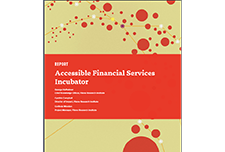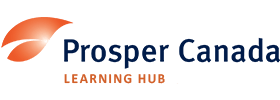Discover financial empowerment resources
Discover financial empowerment resources
This brief examines the findings of three studies—one from The Pew Charitable Trusts and two commissioned by Pew with support from the W.K. Kellogg Foundation—that looked at the effect of asset limits on family finances and state and program costs and...
These are the webinar slides from the Center for Financial Security webinar on the role of education in retirement...
As of 2011, 43 percent of families endured swings of more than 25 percent. Such fluctuations, also called income volatility, make it difficult for families to plan, pay regular expenses, save, or pay down debt. But little research has investigated and compared the impact of changes in year-to-year...
Drive through a low-income neighborhood in virtually any American city and it quickly becomes apparent that the area’s financial health is at risk. The giveaway? The abundance of payday lenders. According to the St. Louis Federal Reserve, there are now more than 20,000 of these organizations...

To qualify for TANF and SNAP, families in many states must prove, among other criteria, that their income and assets do not exceed state or federal levels. These asset limits are caps on the amount of cash, savings, or material property that a family can hold when applying. In the case of TANF,...
This brief explores how Americans think about their savings; how policymakers might enable diverse families to better prepare for, handle, and recover from financial challenges; and related economic factors that should be considered to ensure that policies and programs respond to families’ needs....
Twelve million Americans take out payday loans each year, spending $9 billion on loan fees. The data included here provide facts on the market and borrower usage, plus a brief review of the Consumer Financial Protection Bureau (CFPB) proposed framework to regulate payday and auto title...
This brief examines Americans’ emergency savings: the resources households use as a first line of defense against the unexpected or to cover regular expenses when income does not suffice. Although emergency savings are only one piece of the stability puzzle, a household’s ability to build, use,...
Despite the diversity of their financial situations, many American households share a surprising vulnerability. Families, even those with higher incomes, can be disrupted by just one financial setback. In focus groups conducted by The Pew Charitable Trusts, most participants agreed that having...
Payday loans typically carry annual percentage rates of 300 to 500 percent and are due in a lump sum, or balloon payment, on the borrower’s next payday, usually about two weeks later. These loans are advertised as quick fixes for unexpected expenses, but repaying them consumes more than a third...
PEW conducted a nationally representative survey of more than 7,000 American households, as well as led focus groups in three cities (Boston, Phoenix, and Orlando). The goal was to collect data on family balance sheets, Americans’ perceptions of their financial security, and how their views...
This report seeks to develop a clear picture of the current state of household financial security. It begins by exploring three components of family balance sheets—income, expenditures, and wealth—and how they have changed over the past several decades, and concludes with an examination of how...
What is the difference between those who move up from the bottom and those who don’t? Pew researchers investigated this question and found that a host of factors—including demographics such as education, race, and family employment—play a role in upward mobility. Additionally, Pew’s...
